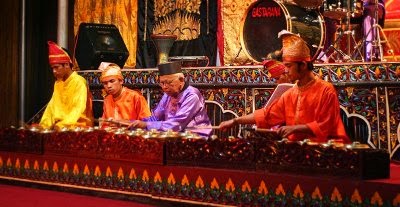Balinese Dance History
Traditional dance is an every ethnic and racial identities that exist in the world, Similarly in Bali. Balinese dance is very typical, Balinese dance generally categorized into three groups, namely Wali as dance performances in sacred ceremony, Bebali as dance performances for the ceremony and also intended to welcome visitors in Bali and Balih-balihan the art of dance which is generally intended as entertainment for Bali visitors.One of the dances are very popular for tourists is the Kecak and Pendet. Around the 1930s, Wayan Limbak worked with German painter Walter Spies to create dance Kecak is based on the tradition of Sang Hyang and parts of the Ramayana story. Wayan Limbak popularized the dance when he decided to around the world with his troupe of Balinese dancers. In the early 1980s, an expert on Balinese dance called I Made Bandem classified Balinese dances in several categories, among others, the Wali group includes Berutuk,
Sang Hyang Dedari, Rejang and Baris Gede, Bebali among other groups is Gambuh, Topeng Pajegan and Wayang Wong, whereas class-balihan balih which among others is the Legong, Parwa, Arja, Prembon and Joged, as well as various other modern dance choreography.
Some of Balinese dances Definition
Tari Rejang
Tari Rejang (Rejang dance) is a typical Balinese dances are played exclusively by women and performances
This dance also intended specifically for women. The dance movements are very simple but progressive and agile. Usually performances Rejang dance held at the temple during the course of ceremonies or religious ceremonies Hindu Dharma.
Tari Baris
Tari Baris (Baris dance) is a kind of traditional war dances from Bali accompanied by gamelan. Baris is leret or line is a metaphor intended especially for a guard of soldiers devoted to the king. This dance depicts the feelings of a young hero before he went to war.
Legong
Legong word comes from the word "leg" which means dance flexible or pliable and "gong" which means
gamelan. Legong is a classical Balinese dance group that has a very complex motion of bound with percussion accompaniment structure is said to be the effect of gambuh. Thus Legong dance means bound by the accompanying from gamelan.
Tari Kecak
Kecak main purpose of this dance is the dance tells the story of the Ramayana through and played mainly by men. This dance is performed by dozens of dancers men who sit in rows of circular and with a certain rhythm called "top" and raised both arms, depicting the Ramayana as line of apes help Rama against Ravana.
However Kecak can be classified as sanghyang ritual, which would dancers dance traditions are in a state of unconsciousness, which is to communicate with God or spirits of the ancestors with the aim to deliver expectations.
Tari Pendet
Pendet was originally a dance that many exhibited worship in temples, places of worship people Hindus in Bali. This dance symbolizes the descent of the gods to the reception on the natural world. with the times, the artists transform Pendet be "welcome message", but still contains elements that sacred-religious.
Tari Janger
Janger dance was created in 1930, is a social dance Janger Amy Bali. This dance is performed by 10 dancers in pairs, namely the daughter (Janger) and son (Kecak). They danced while singing songs in bersahut Janger-replication.
Joged Bumbung
Joged Bumbung is a social dance version of Bali. This dance is usually performed in events social in Bali, such as weddings. This dance is danced by female dancers, then look for the male partner of the audience to be invited to dance along. The dance is usually accompanied by a set of music from bamboo.
Next
Previous : Balinese Music















